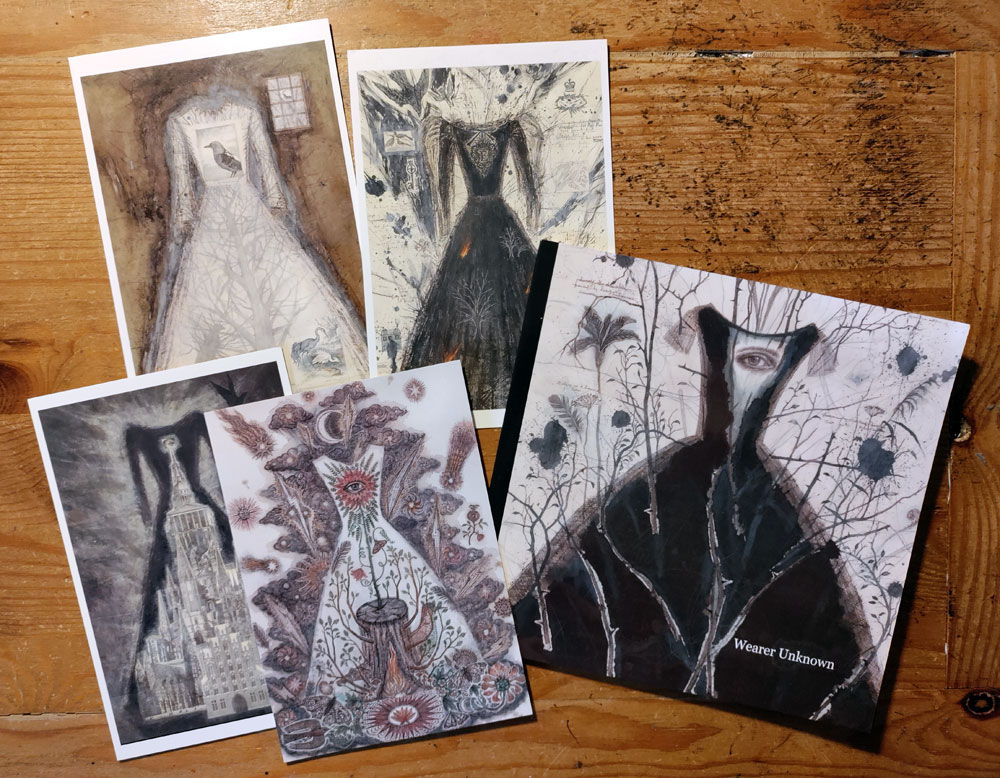I’ve been quiet on here for a while, occupied with projects that I can’t talk about just yet. But here is one I can – another altered book I’ve titled Returning to the Garden.
With this book I wanted to stray away slightly from my purely wildlife themed books and feature a woman from a previous century wandering the grounds of an old house. The older I get the more interested I become in the past – from prehistory to my own past – and that includes the time of Jane Austen, the late eighteenth and early nineteenth centuries.
And my interest in the dress has returned – there’s a woman in a long dress among the pen and ink trees. I came across the work of the artist Victoria Brookland, who exhibits at the Masham Gallery. From the gallery I bought some postcards of her artworks and then a little book titled Wearer Unknown.

I love her imaginative and somewhat dark imagery and her bodiless dresses, from which all manner of strange and wonderful beings and things spring. She was interested in the Brontes, while I find myself curious about Jane Austen, especially after seeing Stephanie Smart’s paper dresses at Firle House. that I wrote about here.
The current BBC One drama, Miss Austen, based on the book by Gill Hornby, helps fuel my interest. The series is about letters and I’m intrigued by letters and diaries. I visited Jane Austen’s house in Chawton a few years ago and saw her writing table and notebooks.
Back to my book. It’s called Returning to the Garden as it features a woman wandering the garden of an old house with darkened windows, smoke rising from the chimney. There’s a bonfire lit and a fox creeping the edges. We do not know why the woman is out at night, but I am reminded of how Cassandra Austen, Jane Austen’s sister, was found wandering the garden after reading her dead sister’s letters in the Miss Austen drama series.

The altered book is now for sale in my website shop and Etsy shop.


















